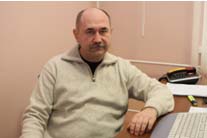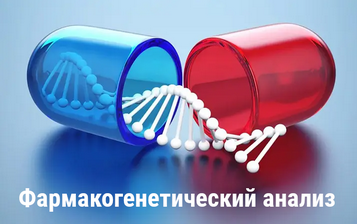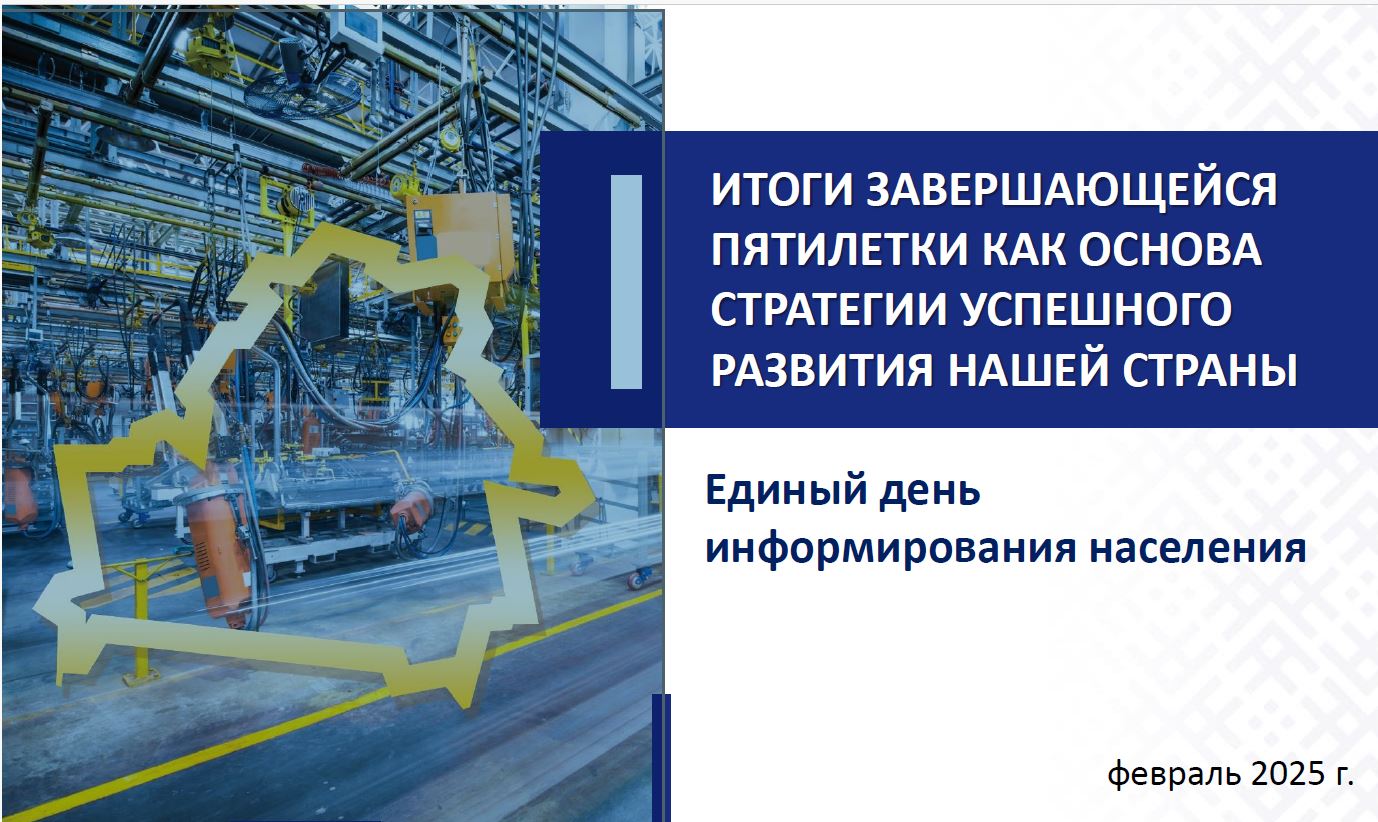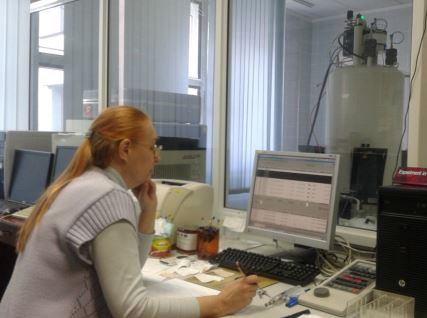Laboratory of Physicochemical Methods of Research

Head of the Laboratory: Alexander V. Baranovsky
D. Sc. (chemistry)
phone: +375 (17) 374-83-24
e-mail: This email address is being protected from spambots. You need JavaScript enabled to view it.
About the Laboratory
Established in 1981. From 1981 to 2004 the laboratory was headed by Nicolai I. Garbuz, Ph.D.
Personnel: 10 researchers, including 1 D.Sc. and 6 Ph.D.
Research directions
- Structure and conformational properties of modified steroids, nucleosides, prostanoids and other biologically valuable compounds
- The elaboration of qualitative/quantitative methods for the analysis of natural and synthetic compounds including drugs, pharmaceuticals and their synthetic intermediates by means of NMR and mass-spectrometry.
Main achievements and developments
- A center for collective use of unique scientific equipment has been created which carries out spectroscopic studies for academic institutes and other scientific and industrial organizations of Belarus
- The diagnostic value of the spin-spin coupling constants 2J (13C-OH) for determination of a tautomer ratio in solutions of polycarbonyl compounds by NMR spectroscopy has been evaluated based on the study of a large set of di- and tricarbonyl compounds bearing intramolecular hydrogen bond
- The transformations of Diels-Alder adducts of steroidal dienyl acetates with nitroethylene have been extensively studied. Based on it, an approach to various nitrogen containing heterocyclic steroids otherwise difficult to access was elaborated. The structure elucidation of all reaction products by means of NMR spectroscopy, mass-spectrometry and X-ray analysis allowed proposing mechanism of their formation.
Services
On a contract basis the laboratory offers registration of 1D and 2D NMR, IR- and mass- spectra; quantitative and qualitative analysis by HPLC with UV and mass-detection, capillary electrophoresis, ICP-MS; provides methodological assistance in interpreting the obtained data. The personnel of the laboratory has a competence and experience in the analysis of unknown compounds and their mixtures for establishing the composition and chemical structure of organic compounds.
Equipment and instruments
High resolution superconducting Fourier NMR spectrometer AVANCE-500
The instrument configuration allows one-dimensional and two-dimensional experiments to be carried out in solutions by detecting most of the nuclei of the periodic system. For 1H and 13C nuclei, analysis of low molecular weight compounds is possible at the concentration up to 0.5 mg/ml (the time of each experiment will be from 12 to 48 hours).
Currently, one-dimensional and two-dimensional NMR spectra are practiced for 1H, 13C, 19F, 31P, 15N, 2H, and 11В nuclei. If necessary, the same techniques can be realized for other nuclei.
For 1H and 13C nuclei the following two-dimensional experiments are available:
- Homonuclear experiments:
- COSY45 - detects scalar interaction between protons - usually up to 3 bonds;
- TOCSY - identification of isolated spin systems;
- NOESY - determination of spatial proximity of protons, the method is effective for elucidation of the stereochemistry of molecules - Heteronuclear experiments:
- HSQC - proton-carbon correlation through one bond;
- HMBC - proton-carbon correlation through more than one bond; the method is effective for determination of the position of quaternary carbon atoms.
The HMBC techniques can also be used to record 2D proton-nitrogen correlation spectra of compounds with a natural 15N content in the molecule. It gives a possibility to investigate low-molecular weight nitrogen-containing compounds.
The use of AVANCE-500 NMR spectrometer can effectively help in solving the following tasks:
- elucidation or confirmation of the chemical structure and spatial structure of low-molecular organic compounds of both synthetic and natural origin
- studying the structure of polymers in solutions
- quantitative and qualitative analysis of drugs, plant protection agents, preparations for veterinary medicine.
Agilent 5975 inert MSD GC-MS System
An Agilent 5975 inert MSD GC-MS System includes an Agilent 6890N Network gas chromatograph and an Agilent 5975 inert MSD mass spectrometer.
The instrument operates in electron ionization mode (70eV).
Main characteristics:
- ion detection in the mass range of 2 - 1050 m/z
- the mode of Scan and selective ion monitoring (SIM) quantitative analysis
- the software contains the latest library of mass spectra of substances allowing to identify the components of samples.
The use of the spectrometer can effectively help in solving the following tasks:
- elucidation or confirmation of chemical structure of synthetic and natural origin compounds
- qualitative and quantitative analysis of drugs, pesticides, etc.
- qualitative and quantitative analysis of biological fluids.
Agilent 6410 Triple Quadrupole LC/MS system
An Agilent Triple Quadrupole LCMS system includes a HPLC chromatograph Agilent 1200 Series RRLC and a 6410 triple quadrupole MS/MS mass spectrometer. The instrument operates with 2 ionization methods: electrospray ionization (ESI) and chemical ionization at atmospheric pressure (APCI).
Main characteristics:
- ion detection in the mass range of 15 - 2000 m/z with resolution 0.1 amu across the mass range
- high sensitivity, low limit of detection and quantitation
- scan modes: MS scan, MS/MS product ion scan, MRM (Multi Reaction Monitoring), MS/MS neutral loss scan, precursor ion scan and SIM (selective ion monitoring)
- MRM mode allows quantifying substances in low concentrations in complex matrices.
Agilent 7500cx ICP-MS inductively coupled plasma mass spectrometer
The instrument is a modern alternative to atomic adsorption spectrometers and is designed for elemental and isotopic analysis of samples. It works in two modes:
- Screening mode (semi-quantitative analysis) allows measuring the concentration of most of the elements of the periodic table at the concentration level of ng/l without prior calibration
- Quantitative mode (using calibration standards) is the simultaneous measurement of high and low concentrations with the removal of all polyatomic interferences using a helium collision cell. Wide dynamic range gives correct results for samples of complex and variable matrices.
The spectrometer can be used for:
- analysis of pharmaceutical substances and products
- food quality control
- biomedical research
- environmental analysis (water, soil, waste, etc.).
Capillarу electrophoresis Agilent CE System
The instrument is designed for efficient analysis of charged particles (ions of inorganic and organic substances) with minimal reagent and sample costs. Main characteristics:
- Diode array detector with wavelength range of 190 - 600 nm; discreteness settings: 1 nm. Light source: deuterium lamp. Registration of spectrograms in the entire wavelength range lasts 0.1 sec. Control of wavelengths with adjustment to any bandwidth (190 - 600 nm)
- Capillaries with inner diameter of 50, 75 and 150 microns can be used. To increase the sensitivity, capillaries with an internal bubble patented by Agilent Technologies can be used.
The System can be used for analysis of:
- cations (ammonium, potassium, sodium, calcium, magnesium, lithium, zinc, etc.)
- inorganic anions (chloride, bromide, nitrite, nitrate, sulfate, phosphate, thiosulfate, iodide, molybdate, azide, thiocyanate, chlorate, etc.)
- organic acids (malate, succinate, lactate, oxalate, citrate, pyruvate, acetate, tartrate anions, etc.)
- toxic anions (cyanide, azide, selenate, arsenate, arsenite).
The contact person: Alexander V. Baranovsky
Phone: +375 (17) 374-83-24
E-mail: This email address is being protected from spambots. You need JavaScript enabled to view it.
Selected publications
- Baranovsky A.V., Popova M.P., Khripach V.A. Synthesis and growth stimulating activity of 15β-substituted brassinosteroids. // Khim. Prir. Soed. (Rus.) - 2015, no. 2, P.254-259.
- Baranovsky A.V., Bolibrukh D.A., Schneider B. Solvolysis of 14,17-etheno-bridged I6α-nitroestratrienyl acetate and lactam formation pathways studied by LC-NMR and LS-MS. Structures of minor products. // Steroids. - 2015, V. 104, P.37-48.
- Baranovsky A.V., Bildyukevich V.N., Golubeva M.B., Kuzmitzky B.B., Mamchits Yu.Yu. Synthesis of 14β-cyanomethyI derivatives of estradiol and estimation of their antitumor activity in vitro. // Bioorg. Chem. (Rus.) - 2016, V.42, no. 1, P.94-103.
- Baranovsky A.V., Ladyko A.S.. Shatskaya V.A., Shcherbakov A.M. 14β-(Isoxazol-3-yl) methylestrane steroids: chemoselective synthesis and transformations with heterocyclic ring opening. // Rus. Jour. Org. Chem. - 2019, V.55, no. 2, P.202-214.









